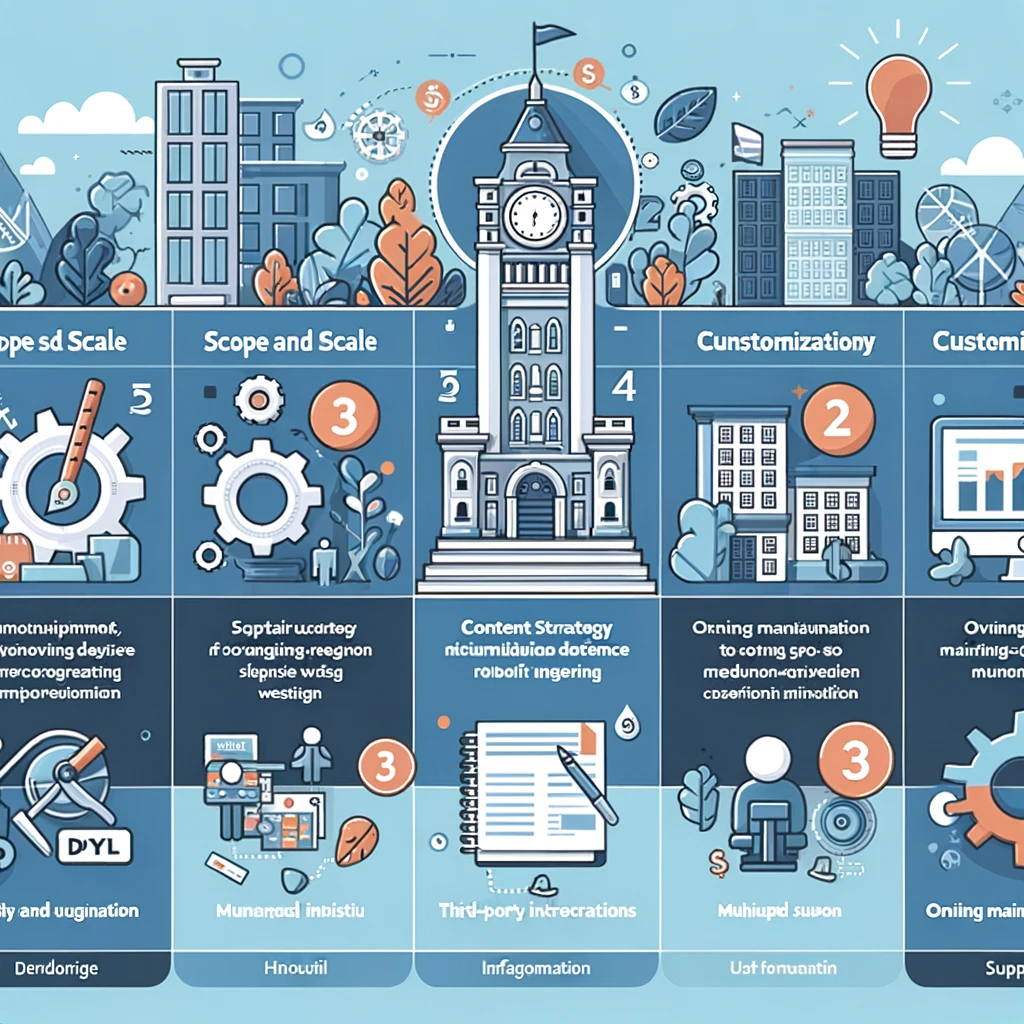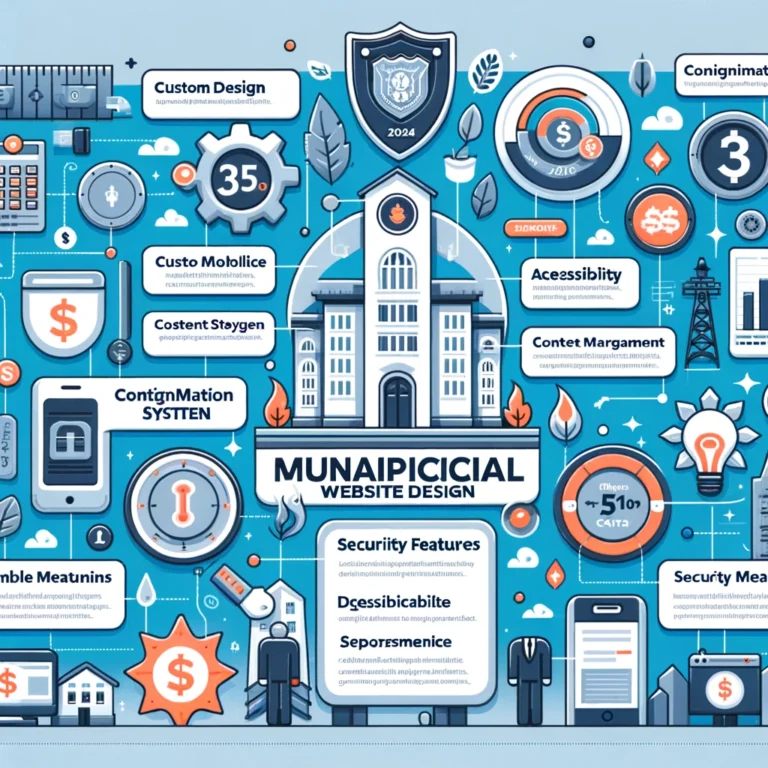The world of municipal website design can often feel like steering through fog—especially when it comes to pinning down the costs. In 2024, with technology advancing at a breakneck pace and digital expectations higher than ever, municipalities are under increasing pressure to deliver websites that are not only functional and user-friendly but also comprehensive and accessible to all citizens. But here’s the million-dollar question that many city managers, IT directors, and municipal decision-makers are asking: “How much does a municipal website design actually cost?”
In this deep dive, we’re pulling back the curtain to give you the full scoop on everything you need to know about the costs associated with designing a municipal website. Whether you’re looking to launch a new site from scratch or considering a major overhaul of your existing digital presence, we’ve got you covered. From understanding the key factors that influence pricing to exploring the range of expenses you might encounter, this guide aims to equip you with the knowledge you need to navigate these waters with confidence.
So, buckle up as we embark on this journey to demystify the costs of municipal website design in 2024, ensuring you’re well-prepared to make informed decisions that benefit your community and keep your budget in check.
Understanding the Investment in Digital Infrastructure
A municipal website is not just a cost center but a vital investment in digital infrastructure that enhances civic engagement, streamlines services, and provides crucial information to residents and visitors. The complexity of designing such a website stems from its need to be highly accessible, secure, informative, and interactive. Let’s explore the components and factors that shape the cost of building a municipal website.
Key Components of a Municipal Website
User-Centric Design
The cornerstone of an effective municipal website is its usability. A design focused on user experience (UX) ensures that visitors can find information and services quickly and easily, regardless of their tech savviness or disabilities. This approach involves intuitive navigation, clear labeling, and a responsive design that adapts to various devices and screen sizes, ensuring all users have equal access to information and services.
Municipal Website Content Management System (CMS)
A flexible and robust CMS allows municipal staff to update content without specialized technical knowledge, keeping the website current with minimal effort. Choosing the right CMS is crucial for the longevity and adaptability of the website, enabling non-technical personnel to manage content efficiently, from uploading documents to updating event calendars, without needing to write a single line of code.
Security Measures
Given the sensitive nature of some municipal transactions and data, security cannot be compromised. This includes encryption, secure online payment systems, and protection against cyber threats. Implementing strong security protocols, regular security audits, and compliance with data protection standards are essential to protect citizens’ information and maintain their trust in municipal digital services.
Interactivity and Services
From reporting a pothole to paying property taxes online, interactive features require sophisticated backend integrations that can add to the cost. However, these features significantly enhance the usability and efficiency of the website, providing citizens with the convenience of accessing services from their homes or mobile devices. Ensuring these services are user-friendly and reliable is key to a successful municipal website.
Accessibility and Compliance
Adhering to standards like the Americans with Disabilities Act (ADA) ensures that the website is usable by everyone in the community, requiring specific design and testing protocols. This includes providing alternative text for images, ensuring site navigation can be done via keyboard, and offering transcripts for audio content. Compliance not only broadens the reach of the website but also reflects the municipality’s commitment to serving all community members equally.

Factors That Influence Design Cost
Scope and Scale
The size of the municipality and the breadth of services it offers play a critical role in determining the complexity and, subsequently, the cost of the website. A larger municipality with a wide array of services will require a more sophisticated website with numerous pages, extensive content, and multiple integrations, all of which contribute to a higher overall cost.
Customization
While using pre-designed templates can offer a cost-effective starting point, most municipalities have unique needs and branding guidelines that require custom solutions. Custom design work increases the project’s scope and necessitates a higher level of expertise, leading to increased costs.
Content Strategy
Creating a cohesive and engaging content strategy involves significant effort and expertise. This includes the migration of existing content as well as the creation of new, relevant material that meets the needs of the municipality’s audience. A well-crafted content strategy is essential for a successful website but requires resources to implement effectively.
Third-party Integrations
Many municipal websites need to integrate with external systems, such as emergency notifications, public transportation schedules, or utility billing systems. These integrations can be complex and require specialized development work, adding to the overall cost of the project.
Ongoing Maintenance and Support
After the initial launch, a municipal website needs regular updates, security monitoring, and user support to stay current and secure. This ongoing maintenance and support ensure the website remains effective over time but represents a continuous investment.

Cost Estimation for Municipal Website Design in 2024
When planning for a municipal website design or redesign in 2024, understanding the financial investment is crucial. The cost can vary significantly based on several factors, including the size of the municipality, the desired functionality, and the level of customization required.
Financial Considerations for Different Municipality Sizes
For small municipalities, a focus on basic functionality and minimal customization might start the budget around $20,000. This cost covers essential features such as a user-friendly design, basic content management capabilities, and standard security measures.
Mid-sized to larger municipalities, aiming for more extensive customization, integration, and a comprehensive content strategy, can expect costs to range from $50,000 to over $100,000. This investment accommodates advanced features, including sophisticated content management systems, enhanced security protocols, and extensive custom development to meet specific needs and integration requirements.
Factors such as the degree of interactivity, specific security needs, and adherence to compliance requirements can further influence the total cost, potentially escalating it based on the project’s complexity and scale.
Maximizing Value for the Community
The initial investment in a municipal website design goes beyond mere costs, translating into significant value for the community. A well-designed website improves service delivery, enhances accessibility, and fosters a positive public perception of the municipal government, leading to increased trust and engagement among constituents.
Strategic Planning for Long-Term Benefits
Investing in a municipal website represents a long-term commitment to digital accessibility and community engagement. Municipalities are encouraged to view the design or redesign process as an opportunity to reassess community needs, optimize services, and improve communication channels.
By emphasizing user experience, accessibility, and security, municipalities can create a digital presence that not only meets current community needs but also anticipates future demands, ensuring a resilient and adaptable online infrastructure.
Municipal Websites
The cost of designing a municipal website in 2024 is influenced by a variety of factors, each crucial to developing a platform that serves the municipality and its residents effectively. Through careful planning and strategic investment, municipalities can create a website that balances cost with immense value, making the digital front door to their services welcoming, accessible, and engaging for the entire community.

